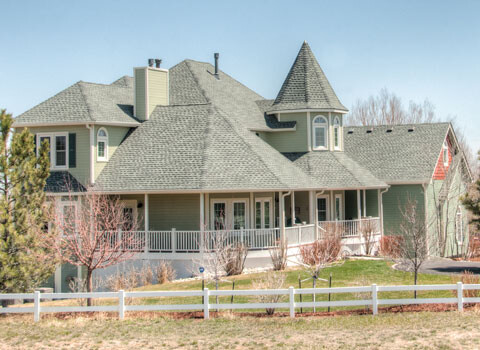Having icicles hanging from the roof of your Denver home might look pretty in winter, but can they cause damage? Knowing more about icicles, including why they form and whether or not they’re dangerous, is important as a homeowner. Should you schedule a roof inspection if you see icicles forming? Keep the following information in mind to help you determine if they’re harmful to your roof.
Why Icicles Form
Where do icicles come from? When snow on your roof melts, it drips down toward the eaves and freezes again. This leads to icicles forming at the edges of your roof, gutters, and fascia. Icicles can form in various sizes, depending on the amount of snow that melts. Smaller amounts of melted snow typically cause thinner or shorter icicles to form, while larger amounts of melted snow lead to thicker and longer icicles.
Problems with Icicles
When might you need roof repair in Denver, CO for icicles? Small, thin icicles usually don’t cause any problems and melt fairly fast. Thicker, longer icicles can become a problem for homeowners since they might indicate the presence of an ice dam. These dams form when snow melts quickly on the upper sections of a roof and slides down to the eaves and refreezes. This causes a blockage that can result in water getting under your roof shingles and into your attic. This is because shingles are water-shedding but not waterproof; when water and ice travel upslope it may lead to a leak. Poor attic insulation and/or attic ventilation increases the risk of having ice dams form.
Icicles can also be a problem if they form on your gutters. Larger icicles can strain gutters, causing them to bend or tear away from your home. This prevents water from being able to flow to downspouts and away from your foundation, which puts your home at risk of water damage.
What to Do About Roof Icicles
What should you do if you have icicles? You can typically wait for smaller, thinner icicles to melt on their own. If you have bigger or thicker icicles forming on your roof eaves, you should have a roof inspection done to check for ice dams. This helps prevent water damage or leaks inside your home.
If you have larger icicles forming on your gutters, you should also have your gutter system checked for signs of blockage and/or damage. Professionals can make repairs to your roof or gutters as needed, such as reattaching gutters or repairing roofing leaks that have formed due to ice dams. Keep in mind that having inspections and repairs done promptly helps reduce the risk of more serious damage to your home.
How to Prevent Icicles
Taking steps to prevent icicles from forming on your roof can help you protect it from damage. Removing snow near the edges of your roof with a rake or plastic shovel following a heavy snow helps prevent large amounts of snow from melting and freezing, but care must be taken to not damage the roof. Having insulation added to your attic and making sure it has proper ventilation lowers the risk of having ice dams and icicles form. This helps protect your roof from leaks and water damage during winter.
Schedule a Roof Inspection in Denver Co with Advanced Exteriors
If you’ve seen larger icicles on your roof or icicles on your gutters, contact Advanced Exteriors to schedule a free inspection of your home. Our experienced roofers in Denver can check your roof and attic for signs of ice dams, and other damages, and make recommendations for repairs. With our expertise, your roof can stay safe from severe damage all winter long.

